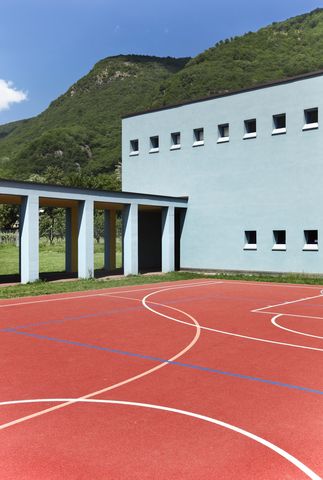In recent years, school safety has become worldwide, a chief source of concern and a key political issue. School security is closely linked to safety outside the school. There is, in fact, no answer to insecurity at school. Students should learn in a conducive environment where they feel safe.
As with other aspects of community life, in addition to natural or environmental disasters, the concern is growing in schools about the threats and risks from what appears to be an increasingly wide range of backgrounds, either inside or outside the premises. The breaches range from victimization and bullying by other students,violence against teachers, and violence from persons outside the institution.
Internationally, countries, cities, and schools are under increasing pressure caused by the movement of rural populations to urban areas, immigration flows, legal and illegal, the deterioration of social and economic situations and the spread of organized crime. The enlarged European Union, Latin America, Australia, Africa and Asia are affected (Van San, 2003; UNODC, 2005). Such changes in populations may exacerbate problems of social integration for families and young people.
The increasing fear of students and teachers in schools due to violence perpetrated by unknown people in Australia is widely publicized each year. We can now add their uncertainty and risks terrorism poses.
This blog discusses the security trends in Australian school as well as devices and policies to be adopted for enhanced school security.
STRATEGIES AND PLANS
To maximise safety for the students and teachers, the school management must develop effective strategies that are know and understood by teachers and students. These can include a variety of resources.
CCTV installation in Schools
For maximum protection in both government and private schools, installing Closed Circuit Vision (CCTV) surveillance program is important. To operate effectively, modern technbology resources should be integrated. Technology resources include electronic access control, CCTV, and an alert system when a security threat arises.
The Presence of Security Personnel
In March this year, the Federal Government approved funding for security guards for 54 schools in Australia they deemed most at risk. This includes at least one school in every state/territory except Tasmania.
In August Point Cook Secondary Collage in Melbourne was the subject of a mass shooting threat issued through social media. Victorian police arrived at the school and guarded the front gate while they are investigated the threat. There are concerns amongst other schools. The Jewish school, Mount Scopus recently decided to hire armed guards as a precautionary measure.
It is important that security guards be well trained and vigilant, in such a busy environment. Immediate response
Safety-related policies and procedures
Each school should have systematic reviews of its Policies and Procedures. Areas of responsibility should be clearly defined and made known to the school community. It is important that drills are held regularly so the both staff and students know what to do when a security threat arises.
Australian Standard AS3745 (Planning for Emergencies in Facilities) stipulates what is necessary for schools to have in place for security threats or other emergencies.
- Site-specific emergency procedures
- Evacuation diagrams, correctly labelled and orientated in every building
- Structured Emergency Control Organisation (ECO) (Warden teams)
- Emergency Planning Committee (EPC)
- Emergency communication strategies
- Bi-annual emergency evacuation and fire training program
- Annual evacuation/lockdown drills.
Conclusion
In conclusion, security in Australian schools is best achieved through an integration of resources and procedures. This includes CCTV cameras, electronic access control, a good communication and alert system, security guards, well understood policies and procedures and generally making students more aware of what to look for. While there are standard threats, it is important to realise that what security issues are different for different schools, and each school should reflect on what it most effective for it.



